Ask any beauty editor, derm, or skin expert alike what’s in their skincare arsenal, and they’ll likely pull out a handful of products that list Centella asiatica as an ingredient. Loaded with antioxidants, it’s a moisturizing and repairing natural elixir that’s as buzzy as it is good for you. This herb is showing up in a host of products as a be-all and end-all solution and is all due to the numerous skin benefits of Centella asiatica that suit everyone and anyone.
What is Centella asiatica?
Centella asiatica, known as cica, Gotu Kola, or Tiger Grass, is a plant native to Asia used for hundreds of years for medicinal purposes, including healing wounds, scratches, and burns. Surprisingly, the benefits of Centella asiatica weren’t discovered by people but by tigers who used to roll around in the herb to heal their wounds. Hence, it got the name Tiger Grass.
Cica’s benefits for the skin are mostly credited to its bioactive saponins compounds called centelloids, which account for 1% to 8% of all Centella asiatica constituents.[1] Saponins contain asiaticoside, madecassoside, asiatic acid and madecassic acid — the main components responsible for wound healing. Centella asiatica also contains other compounds chocked full of skin benefits, including flavonoids, phenolic acids, amino acids, vitamins, essential oils, and sugars.[2]
Centella asiatica benefits for skin
There’s indeed some research going into the topical application of Centella asiatica extract and its effects on the skin. Shortly, Centella asiatica packs anti-inflammatory and antioxidant properties, moisturizing benefits, as well as anti-aging and skin-repairing activities.[3] Here are the reasons you should use cica in your skincare routine:
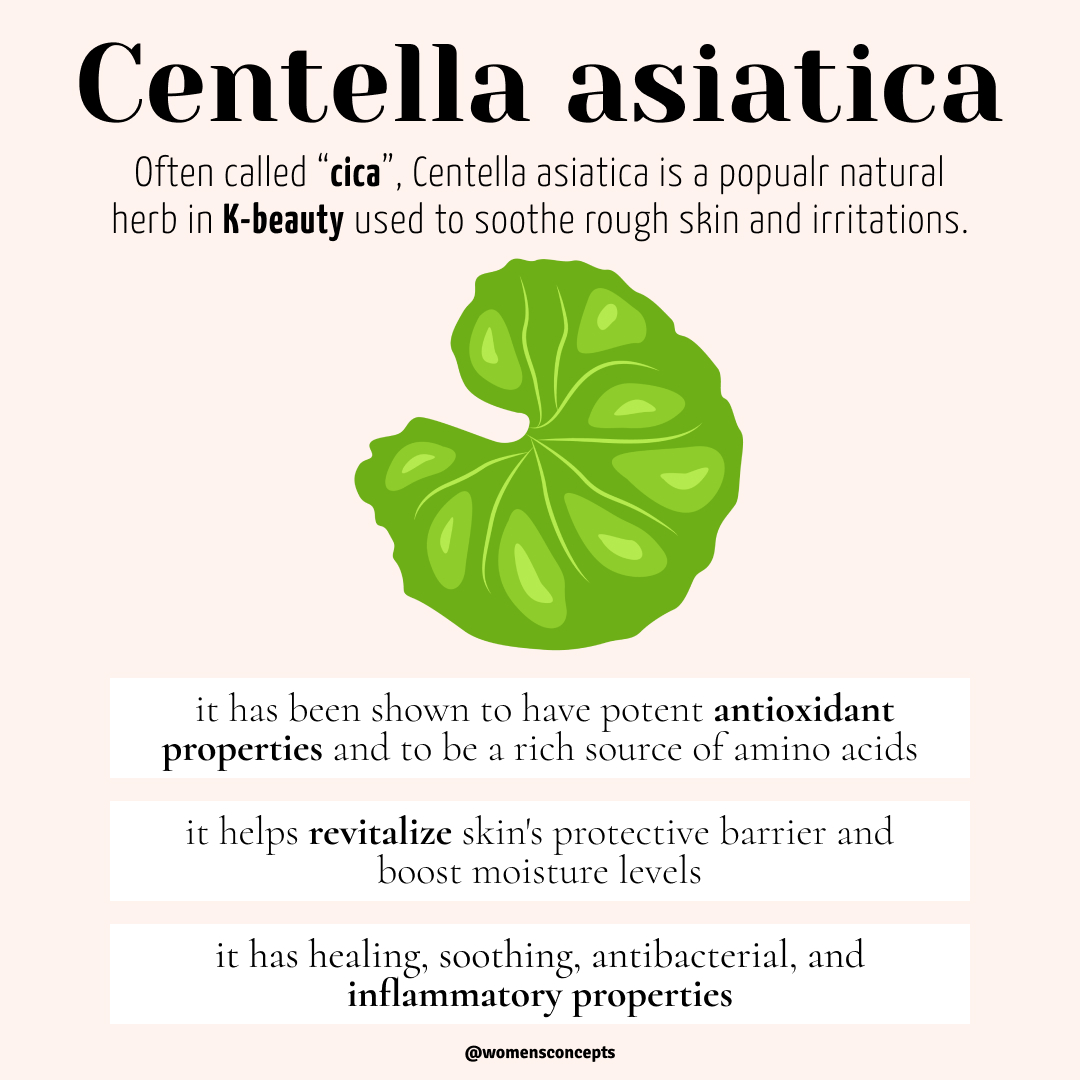
Anti-inflammatory
For sure, Centella asiatica is best known for its anti-inflammatory properties, linked to the high content of saponins. It was shown that saponins from Centella asiatica, especially asiaticoside, could inhibit the signaling molecule that promotes inflammation.[4] This is why some studies suggest Centella asiatica can be used to soothe inflammatory skin conditions such as eczema, psoriasis, redness, or acne.[5]
Interestingly, saponins also possess antioxidant activity, meaning they help reduce cell damage caused by free radicals, a common cause of oxidative stress and premature skin aging.[6] Antioxidants may as well promote wound healing since damaged tissue usually results due to low levels of free radical scavengers, aka antioxidants. Research also confirmed the extract of Centella asiatica can alleviate irritation and boost the regeneration of the epidermal barrier, which has the role of keeping the skin protected from environmental damage.[4]
Antioxidant
Among the skin benefits of Centella asiatica, its high antioxidant activity is probably the heaviest researched one. Antioxidants are part of any skincare robust strategy as they increase the defense against harmful free radicals, fend off cell damage, and help prevent oxidative stress.
Well, not only saponins but also the flavonoids and phenolic acids from Centella asiatica extract possess high antioxidant properties. It was also found that the topical application of asiaticoside increased antioxidants in the skin, where the content of vitamin C and vitamin E was boosted up to 36% and 77%, respectively.[7]
Since it’s both anti-inflammatory and antioxidant, Centella asiatica is often found in products that aim to reduce irritation and redness, soothe the skin, ease inflammation, and, last but not least, keep skin defended.
Moisturizing
Enhancing skin moisture is another research-backed benefit Centella asiatica comes with. The ability of Centella asiatica to increase hydration is primarily connected to the presence of a sugar chain (glycone) in the plant’s active compounds.[4] This was confirmed to have the role of binding water into the skin and increasing moisture retention, which in turn creates a barrier that prevents transepidermal water loss (TEWL). Consequently, this helps consolidate the protective barrier since TEWL is the first culprit that could sabotage it, which could lead to dehydrated skin and sensitivities.
Studies have shown that 5% Centella asiatica extract reduced TEWL by 18% and improved skin hydration by 25% with double daily applications after anywhere between one to four weeks.[4] More than that, other researchers suggested that thanks to its flavonoids and amino acid content, Centella asiatica can inhibit the degradation of hyaluronic acid.[8]
Anti-aging
Anti-aging is an area where Centella asiatica truly excels since the plant compounds target multiple causes that accelerate skin aging. This is where another skin benefit of Centella asiatica stands out: increasing the production of type I collagen.[9] Collagen is the main structural protein that maintains skin strength, firmness, and elasticity, and its degradation leads to fine lines, wrinkles, and saggy skin.
According to research, the asiatic acid, madecassic acid, and asiaticoside in Centella asiatica can boost the skin’s total protein and collagen content.[3] Some tests done on mice reported that Centella asiatica increased collagen levels by an average of 77.89% through the proliferation of fibroblast, a type of cell that secrets collagen proteins.
On top of increasing the collagen level, Centella asiatica aids in delaying aging signs by improving the epidermal barrier function and preventing TEWL. This eventually slows wrinkles apparition linked to skin dryness.[10] Finally, the antioxidant activity of Centella asiatica, helps defend against oxidative stress, which is the leading cause of premature skin aging.
Centella asiatica side effects
Overall, Centella asiatica is considered safe when applied topically and suitable for all skin types, especially sensitive ones. However, in some people, Centella asiatica may cause allergic reactions, burning, or irritations. So before applying your cica product, make a small patch test before.
How to use Centella asiatica
It’s best to start using Centella asiatica two or three times a week and gradually work up to once or twice daily applications. Whether you do it in your morning routine or at night is a matter of choice — its antioxidant activity works for the day, while due to its repairing abilities, it makes a great nighttime active, too.
Creams containing Centella asiatica should be applied after your targeted treatment to moisturize your skin and trap all the benefits in. In the case of serums, use them just before your moisturizer.
Centella asiatica is also something you want to apply on your skin after a chemical peel since it accelerates the skin recovery process.
The verdict
Centella asiatica is definitely something you should not overlook. Although the research is far from conclusive, current results look very promising. Until now, only the following skin benefits of Centella asiatica have been supported by research studies:
- Soothes inflammation and irritation due to its high anti-inflammatory properties.
- Accelerates the skin recovery process and consolidates the protective barrier.
- Boosts skin’s antioxidant defense.
- Increases skin hydration and prevents moisture loss.
- Reduces aging signs since it increases collagen levels and fights cell damage.
The best Centella asiatica products
Now that you decided you can’t live without it, here are the best Centella asiatica products worth adding to your skincare routine.
Dr. Jart+ Cicapair Cream
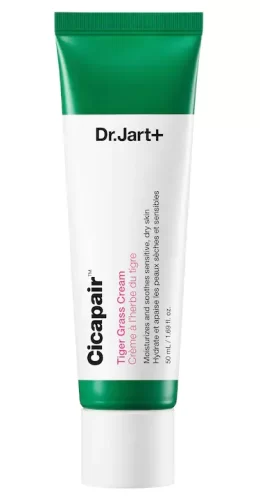
This cica-containing cream is what dry, sensitive skins need to stay plump and protected all day long. Since it’s infused with two sources of Centella asiatica, from the plant and leaf extracts, the cream does a great job soothing and fortifying the protective barrier. In addition, skin-loving ingredients such as niacinamide, glycerin, ceramide, and adenosine lock in moisture and assist in cell repair.
SeoulCeuticals Snail Mucin + Centella Serum
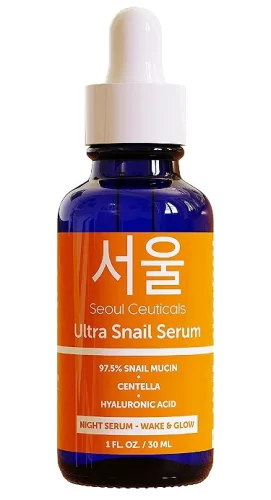
This serum is definitely something you should check out. It combines 97.5% snail mucin extract with Centella asiatica, both ingredients working to moisturize the skin, increase collagen production, and speed up the healing process. You’ve guessed it right: this formula does a damn well job at fighting wrinkles and dullness.
COSRX Pure Fit Cica Cream
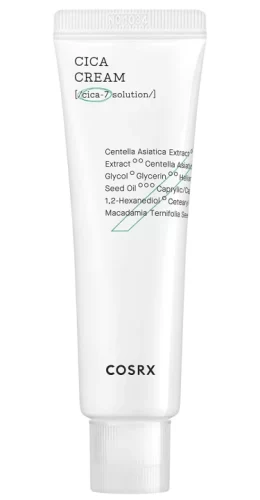
Pick this one if you like super hydrating and lightweight formulas. It’s highly concentrated in Centella asiatica, containing the extracts from the plant, root, and leaves, plus the four saponins I was talking about earlier: asiaticoside, asiatic acid, madecassic acid, and madecassoside. It addresses dehydrated, dull skin, but anyone can use it, really.
Neogen Calming Cica Tree Cleanser
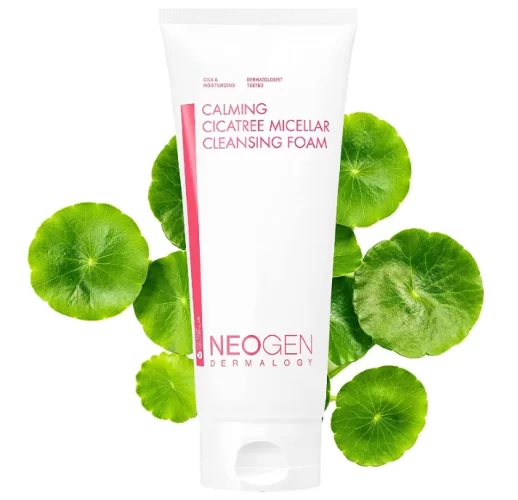
With a blend of Centella asiatica, amino acids, ceramides, and eight types of hyaluronic acid, this foamy cleanser works like a charm at dissolving makeup, pollution, and debris without stripping away essential moisture. It’s as gentle enough even for problematic skin.
Dr. Dennis Gross Anti-Aging Moisturizer
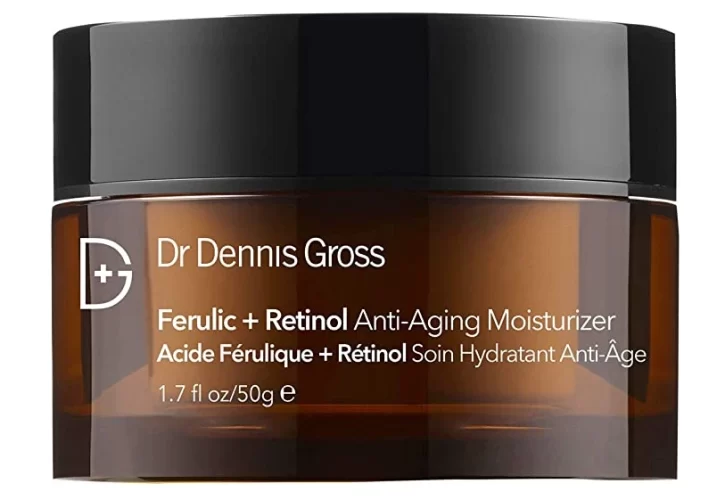
Dr. Dennis Gross’s Anti-Aging Moisturizer contains not only the gold standard of anti-aging, retinol, but also a blend of AHAs, including ferulic, glycolic, and lactic acids. They work to boost cell turnover, which in turn thickens the skin and reduces wrinkles and fine lines look. Centella asiatica extract, hyaluronic acid, amino acids, and peptides support the skin’s barrier function.
Sources
Women’s Concepts uses reliable sources, including dermatologists’ insights, clinical trials, and scientific journals, to find accurate information and support all the facts shared in our articles. All statements and claims have clear and legit references. Read our editorial policy to learn more about our sources of information, our process of researching and fact-checking the content, and how our team strives to keep all articles updated, completed, and trustworthy.
- JPC – Journal of Planar Chromatography – Modern TLC, Volume/Issue: Volume 24: Issue 1, Identification and quantification of triterpenoid centelloids in Centella asiatica (L.) Urban by densitometric TLC
- Gray NE, Alcazar Magana A, Lak P, Wright KM, Quinn J, Stevens JF, Maier CS, Soumyanath A. Centella asiatica – Phytochemistry and mechanisms of neuroprotection and cognitive enhancement. Phytochem Rev. 2018 Feb;17(1):161-194. doi: 10.1007/s11101-017-9528-y. Epub 2017 Sep 20. PMID: 31736679; PMCID: PMC6857646.
- Bylka W, Znajdek-Awiżeń P, Studzińska-Sroka E, Brzezińska M. Centella asiatica in cosmetology. Postepy Dermatol Alergol. 2013 Feb;30(1):46-9. doi: 10.5114/pdia.2013.33378. Epub 2013 Feb 20. PMID: 24278045; PMCID: PMC3834700.
- Ratz-Łyko A, Arct J, Pytkowska K. Moisturizing and Antiinflammatory Properties of Cosmetic Formulations Containing Centella asiatica Extract. Indian J Pharm Sci. 2016 Jan-Feb;78(1):27-33. doi: 10.4103/0250-474x.180247. PMID: 27168678; PMCID: PMC4852572.
- Park JH, Choi JY, Son DJ, Park EK, Song MJ, Hellström M, Hong JT. Anti-Inflammatory Effect of Titrated Extract of Centella asiatica in Phthalic Anhydride-Induced Allergic Dermatitis Animal Model. Int J Mol Sci. 2017 Mar 30;18(4):738. doi: 10.3390/ijms18040738. PMID: 28358324; PMCID: PMC5412323.
- Gülçin I, Mshvildadze V, Gepdiremen A, Elias R. Antioxidant activity of saponins isolated from ivy: alpha-hederin, hederasaponin-C, hederacolchiside-E and hederacolchiside-F. Planta Med. 2004 Jun;70(6):561-3. doi: 10.1055/s-2004-827158. PMID: 15241892.
- Shukla A, Rasik AM, Dhawan BN. Asiaticoside-induced elevation of antioxidant levels in healing wounds. Phytother Res. 1999 Feb;13(1):50-4. doi: 10.1002/(SICI)1099-1573(199902)13:1<50::AID-PTR368>3.0.CO;2-V. PMID: 10189951.
- Nikko Fernando Venesiaa *, Edy Fachrialb , I. Nyoman Ehrich Listerc, Faculty of Medicine, Universitas Prima Indonesia, Medan, Indonesia, Effectiveness Test of Centella Asiatica Extract on Improvement of Collagen and Hydration in Female White Rat
- Widgerow AD, Chait LA, Stals R, Stals PJ. New innovations in scar management. Aesthetic Plast Surg. 2000 May-Jun;24(3):227-34. doi: 10.1007/s002660010038. PMID: 10890953.
- Hashizume H. Skin aging and dry skin. J Dermatol. 2004 Aug;31(8):603-9. doi: 10.1111/j.1346-8138.2004.tb00565.x. PMID: 15492432.




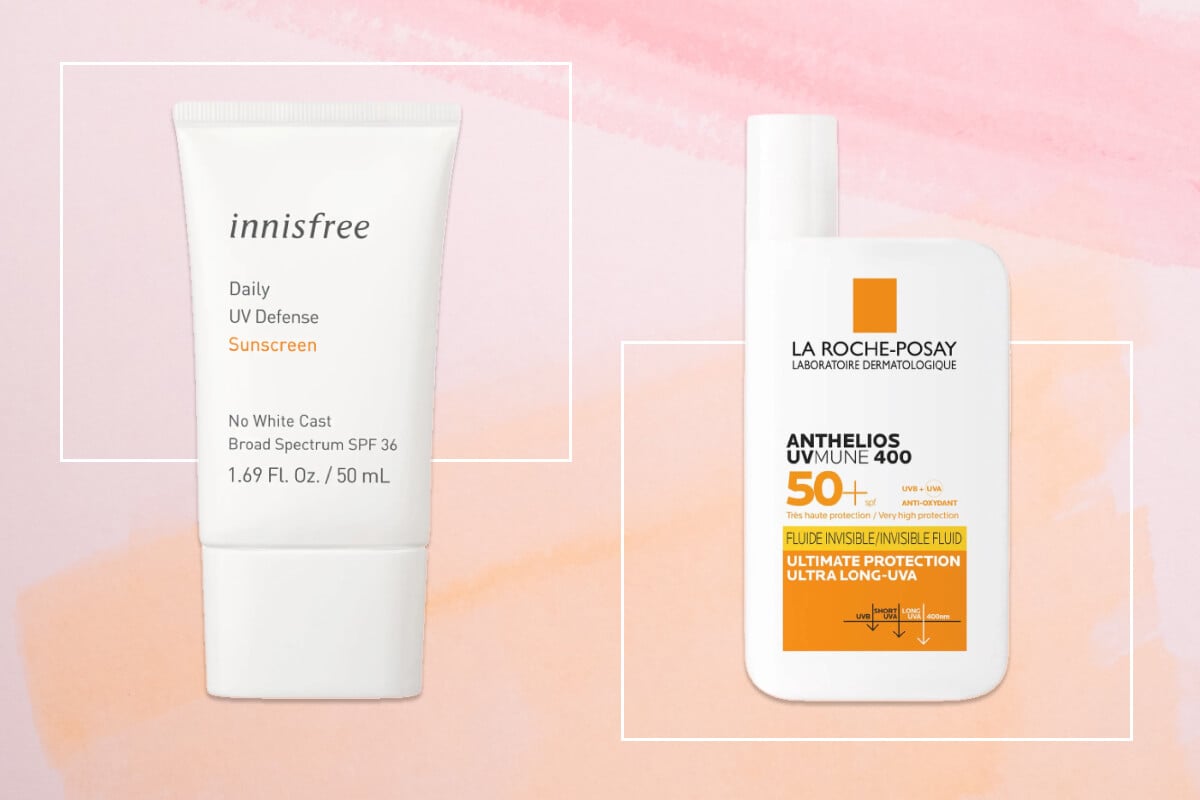
![Does resveratrol in red wine benefit your skin? While sipping on a glass of red wine can be a delightful experience, relying on it for skincare benefits is not the best idea. Sure, red wine contains a smidge of resveratrol, but let's put things into perspective. The concentration of resveratrol in red wine is relatively low. Red wines, specifically Pinot noir from France, typically contain 0.361-1.972 mg of resveratrol per liter.[8] To hit that reference dose of 500mg of resveratrol, you'd need to drink a lot of wine. We're talking about downing anywhere from 100 to 1000 glasses per day. It's a scene straight out of a wine lover's wildest dreams, but definitely not the healthiest approach. Resveratrol Benefits for Skin](https://womensconcepts.com/wp-content/uploads/2022/03/Resveratrol-Benefits-for-Skin.jpg)